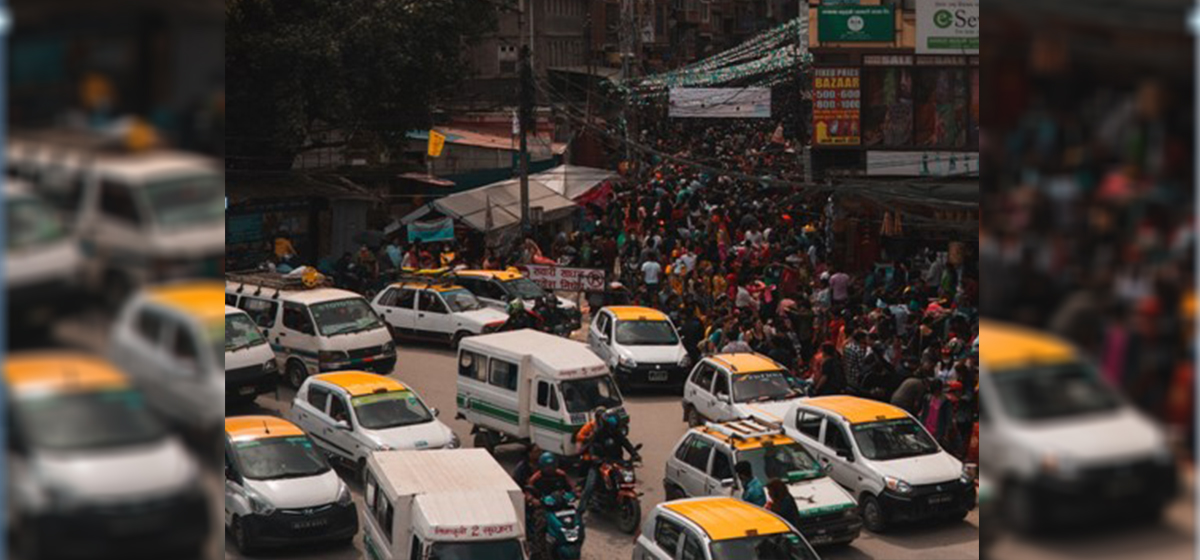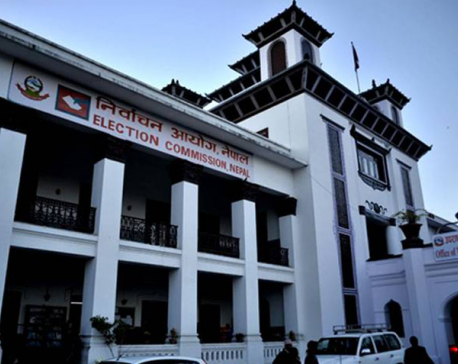
OR
New transport guideline proposes classifying taxis into three categories
Published On: June 13, 2023 01:45 PM NPT By: Republica | @RepublicaNepal

KATHMANDU, June 13: The government has classified taxis into three categories based on their characteristics.
In the draft of the 'Standards for Vehicles Used as Taxis, 2080 BS' prepared by the Department of Transport, taxis have been classified into three categories based on their characteristics. Taxis are classified into ordinary, deluxe and luxury based on their size, mechanical capacity and other specialties.
The department has requested one and all to send objective advice and opinions/suggestions through email or Facebook page by June 19 over the said draft.
Vehicles used as ordinary taxis must be 800 cc or more in the case of vehicles equipped with internal combustion engines. In the case of electric vehicles, it is stipulated that the minimum ratio between the energy stored in the battery (kilowatt hours) and the total weight of the vehicle (kg) should be 0.012.
The ordinary taxis’ maximum engine or motor power should be 30 kilowatts or more, the maximum engine or motor torque should be 60 Newton meters or more, the wheel diameter should be 2,300 mm or more and the boot space should be 160 liters or more. The draft stipulates that there should be at least a sound system in the front or behind the vehicle for entertainment in the ordinary taxis.
Similarly, the government has made a different provision in the case of deluxe taxis. In the case of vehicles equipped with internal combustion engines, a deluxe taxi should be 1200 cc or more and in the case of electric vehicles, the minimum ratio between the energy stored in the battery and the total weight of the vehicle should be 0.019.
The vehicle used as a deluxe taxi should have a maximum engine or motor power of 50 kW or more, a maximum engine or motor torque of 80 Newton meters or more, a wheelbase of 2400 mm or more and a boot space of 200 liters or more.
The other must-have features in a deluxe taxi include front and rear sound systems for entertainment, at least one display screen with touch screen, front and rear windows that open and close with electric switches, all-weather automatic air conditioning (AC) and rear reading lamps.
Likewise, in the case of luxury taxis, there must be many features. In the case of vehicles equipped with internal combustion engines, a luxury taxi should be 2000 cc or more, while in the case of electric vehicles, the minimum ratio between the energy stored in the battery and the total weight of the vehicle should be 0.025.
Also, the maximum engine or motor power should be 100 kW or more, the maximum engine or motor torque should be 170 newton meters or more, the wheel base should be 2700 mm or more and the boot space should be 400 liters or more.
Apart from the services required for deluxe taxis, in the case of luxury taxis, there must be air-conditioning system with automatic climate control, air-conditioned air ducts for the rear seats, arm-rests for rear passengers, front and rear cup holders, rear reading lamps, DC for charging mobiles or other electronic devices for rear seat passengers, AC power outlet, Wi-Fi internet facility, front head room and rear head room should be at least 1000 mm and 950 mm respectively and the front leg room and rear leg room should be 1000 mm and 900 mm respectively.
Based on the classification, the fare rates of the taxi have been fixed. According to the norms, the fare rate of ordinary taxis will be equal to the fare rate set by the government for taxis. The fare of a deluxe class taxi will be 20 percent higher than the fare of an ordinary taxi. The fares of special luxury taxis will be cent percent higher than those of ordinary taxis.
You May Like This

Johnny Depp declines ex Amber Heard's demand for substance abuse documents
Superstar Johnny Depp, who was recently found defending his recent advertisement with luxury fashion and beauty brand has refused to turn... Read More...

Govt grants Rs 106m to EC for luxury cars
KATHMANDU, Oct 9: Despite public and media outcry, the Ministry of Finance (MoF) has released millions of rupees for the... Read More...

Printers installed in 2000 taxis operating in Valley
KATHMANDU, March 15: Nepal Bureau of Standards and Metrology has intensified installing printing machine to the taximeter in taxis operating... Read More...


Just In
- Sunkoshi-Marin Diversion Project’s tunnel construction nears completion, breakthrough scheduled for May 8
- Govt tightens security arrangement for Third Investment Summit 2024
- Pesticide residue found in vegetables in Nepalgunj
- Aam Janata Party and Samajwadi Jana Ekata Party merge
- 1,600 participants confirmed for Nepal Investment Summit
- Ilam-2 by-elections held peacefully, vote count likely to start tonight
- NEA schedules five-day power cut across Kathmandu Valley for underground cable installation
- Hundreds of passengers including foreign tourists in distress as poor visibility halts flights to and from PRIA







-1200x560-wm_20240427144118.jpg)






Leave A Comment